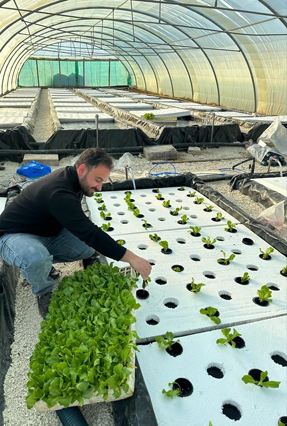You are here
Rainfed agriculture in decline despite support — ministry
By Maram Kayed - Sep 24,2019 - Last updated at Sep 24,2019

Almost 80 per cent of agricultural lands in Jordan are dedicated to wheat, barley and legumes, all of which require rainwater (Photo by Amjad Ghsoun)
AMMAN — Rainfed agriculture declined by at least 50 per cent in the last decade, estimates the Ministry of Agriculture.
Ministry Spokesperson Lawrence Majali said that the latest land scans show a "decline in lands that plant rainfed produce, despite government support to do the exact opposite".
Almost 80 per cent of agricultural lands in Jordan are dedicated to wheat, barley and legumes, as ministry land surveys showed, all of which require rainwater, according to Mahmoud Oran, president of the Jordanian Farmers Union. As for fruit trees, only 54 per cent of all trees in the Kingdom are watered using rainfed techniques, he added.
However, Oran suggested that the decrease in rainfed agriculture "is not related to rain levels as much as it is related to the farmers' operational costs... specifically, the cost of the water, the cost of the machinery or labour used for watering and other costs That is the true problem".
"It is a universal rule that some years might have little or no rainfall, and in that case farmers have always resorted to complementary watering — which uses purchased water," said the union president.
Majali mentioned that wheat and barley are bought by the government from local farmers at a “very good price”.
"So if I were a farmer I would increase my plantations, even if I had to buy a few metres of water to compensate for the decrease in rain storages."
Related Articles
AMMAN — The contribution of Jordan’s agricultural sector to the national GDP has reached 30 per cent, according to President of the Jo
AMMAN — The Jordan Farmers Union is urging the adoption of a two-pronged strategy that combines the power of afforestation with cutting-edge
War and drought have crippled Syria's wheat crop, with some experts now forecasting output of the staple food could fall to around a third of pre-war levels, and possibly even below one million tonnes for the first time in 40 years.













